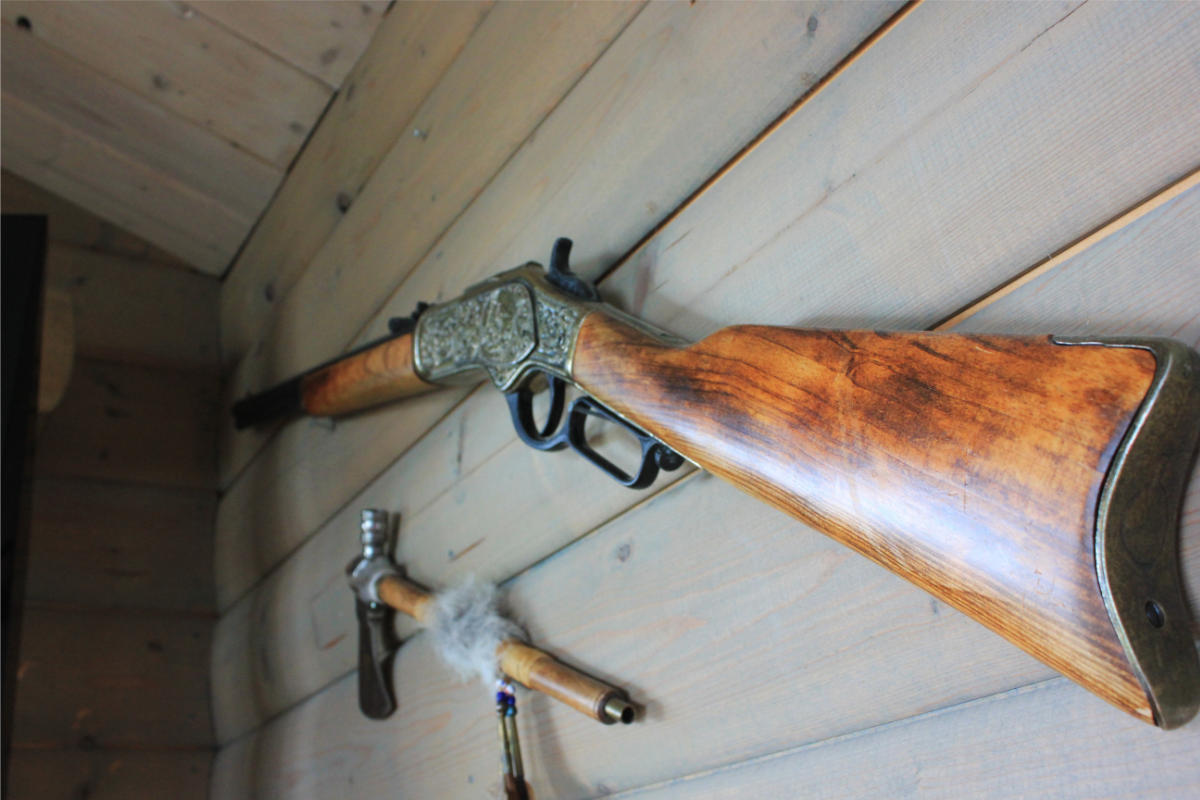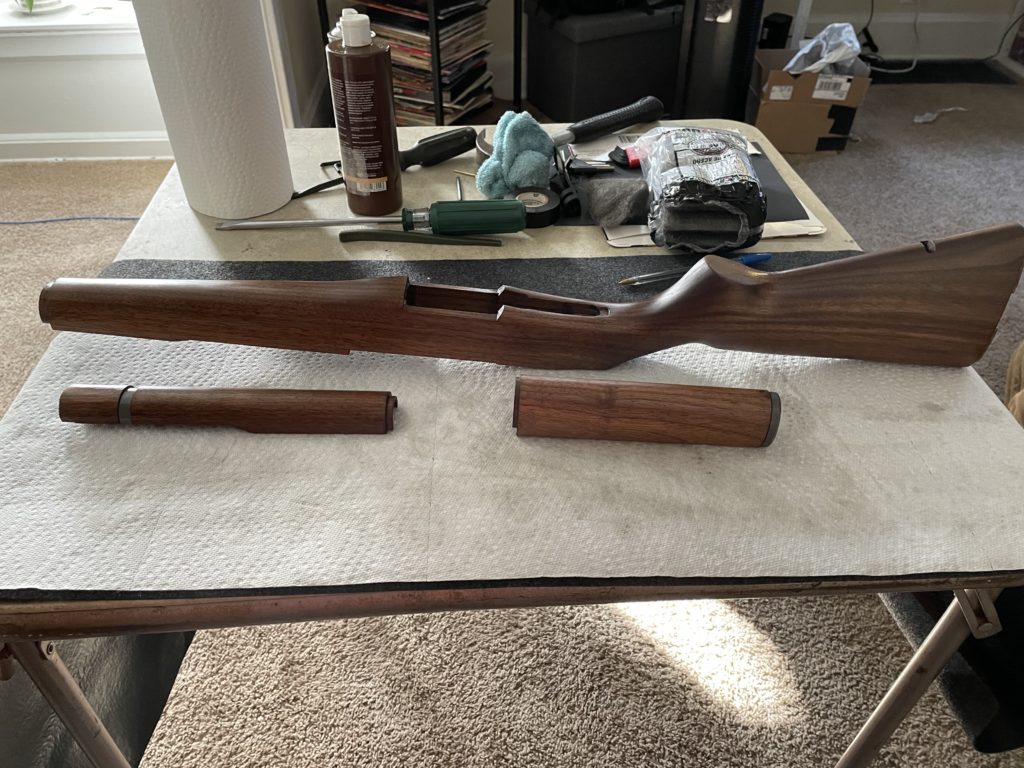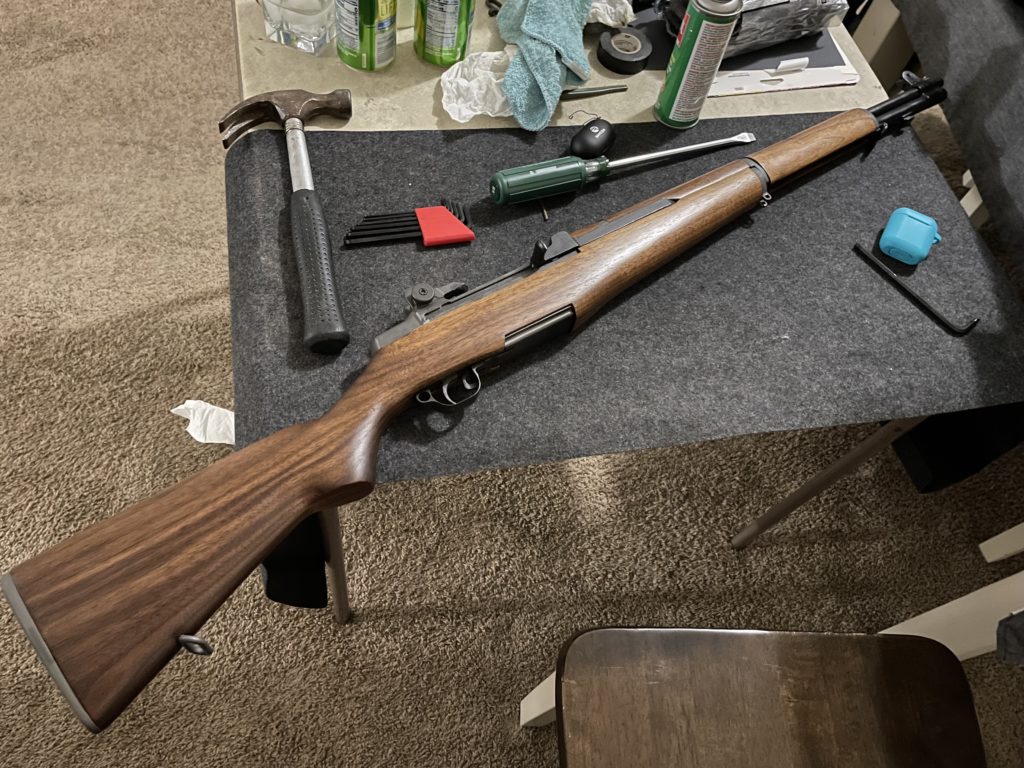
 0
0 
There are many ways to finish or refinish a wood stock for a rifle or shotgun. While most wood stocks these days are finished with a polyurethane coating, back in the day most stocks were treated with some sort of oil.
Boiled linseed oil was a popular wood treatment to protect wood from moisture and drying out as far back as over 100 years ago, but I still believe it’s a great way to protect the wood of your rifle or shotgun and give it a classic look.
If you’re planning on treating your wood stock with boiled linseed oil, make sure to follow these steps. I used this same method to finish the walnut stock on my CMP Expert Grade M1 Garand and it came out looking amazing.

Boiled linseed oil has been used for over 100 years to finish a variety of wood products such as furniture and as with our case, firearm stocks.
Many militaries used boiled linseed oil to treat the stocks for their combat rifles before they issued them to soldiers in WWI and WWII.
BLO, as it’s often referred to, is an inexpensive oil that when properly applied, drastically extends the life of wood by protecting it from water logging as well as preventing the wood from drying out and becoming brittle.
When BLO is applied, it brings out the natural grain patterns of the wood, which is very pleasing to the eye. It’s also very easy to apply and difficult to mess up. When deciding on how I wanted to treat the wood on my M1 Garand stock, the ease of use for BLO was the most enticing benefit for me.
In addition, boiled linseed oil is inexpensive and easy to find. Most hardware stores will carry BLO, and you can purchase large containers of it for a relatively low price.
As a final added benefit, in my opinion boiled linseed oil smells really good. Although at first it smells like burned frying oil, after treated into the wood it gives off a subtle but pleasant aroma.

As I mentioned, treating a wood stock with boiled linseed oil is mostly foolproof. Just follow these steps and you’ll have a beautiful and long-lasting stock for your rifle or shotgun.
The first step to finishing a wood stock with boiled linseed oil is to disassemble the firearm.
First, of course, make sure the gun is clear and unloaded. Then, remove all the wood parts from the other metal parts. This is generally pretty easy to do, and for most guns the wood will all be in one piece.
This is important because to apply boiled linseed oil properly, you must treat the entire surface of the wood with several coats. Just applying the oil to the wood you can access without taking the gun apart won’t allow you to achieve the full protection BLO provides.
When disassembling, make sure to remember what parts go where. YouTube videos are helpful to show you how to fully disassemble the gun model you’re working on. Alternatively, take pictures as you go so if you get stuck when piecing everything back together, you have something to reference.
The next step to preparing the stock for boiled linseed oil is sanding. If the wood you want to refinish already has a different type of finish on it, make sure to do some extra sanding to remove it completely.
Once you’ve got the stock down to bare wood, now you can start the fine sanding process. For an even and more controllable sanding process, avoid electric sanders and instead do it by hand. Sanding by hand will allow you to take your time and do it right, and because there’s not much material, it shouldn’t take too long anyway.
Use a fine grit sandpaper of 1000 or 1500 and sand all surfaces of the wood. Make sure to repeat several times to ensure you didn’t miss any spots.
Next, take a slightly wet rag and wipe the surface of the wood. This will remove the sawdust and raise up the grain. Once you’ve wiped down the wood, lightly sand the raised grain one last time for an ultra-smooth finish.
Finally, brush off any remaining dust with a dry cloth and prepare for the next steps.
For the final step of prepping the wood, take a wad of fine steel wool and brush the entire surface of the wood.
This will remove any final dust, burrs, and any other impurities on the surface of the wood so the oil can penetrate as much as possible.
Applying boiled linseed oil to the wood couldn’t be simpler. You can use a lint free cloth or sponge, but I found the easiest way to apply BLO to the wood is with your fingers.
Place a generous drop of oil on the wood and work the oil into the wood with your fingers using a circular motion. This will ensure the oil is getting into the grain of the wood from all sides.
Repeat this process through the entirety of the wood’s surface, making sure to get the oil into hard-to-reach areas and small crevices.
Once you’ve applied the first layer of oil, allow it to sit and penetrate through the pores of the wood for 20-30 minutes. After waiting, take a lint free cloth and wipe away any remaining oil. Wait a full 24 hours before applying the next layer of BLO.
One layer of oil may not be enough, so make sure to repeat the layering process at least 3 times. Any additional layers are up to you. The more layers you add, the more of a shine the wood will have.
Too many layers of boiled linseed oil isn’t ideal though, as it will leave too much of a glossy and almost waxy finish. 3-5 layers is generally the best for most stocks.

After you’ve waited at least 24 hours since last applying the oil, now it’s time to reassemble.
Make sure you reassemble everything correctly and test the function of the firearm to make sure everything is working properly, and you didn’t misplace any parts.
Throughout the life of your BLO treated stock, you may need to reapply oil, especially in high traffic areas of the stock such as the grip and handguard. Generally, a BLO finish will last quite a long time, but make sure to keep an eye on it to see when or where it may require your attention.
Finishing a wood stock with boiled linseed oil is a great beginner and budget friendly method for treating wood stocks of any model of firearm.
Boiled linseed oil brings out the natural patterns of the wood and provides a reliable and long lasting finish you can count on, so don’t hesitate to give it a try.

 0
0